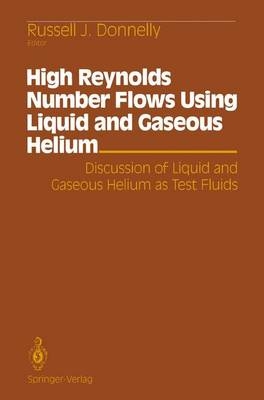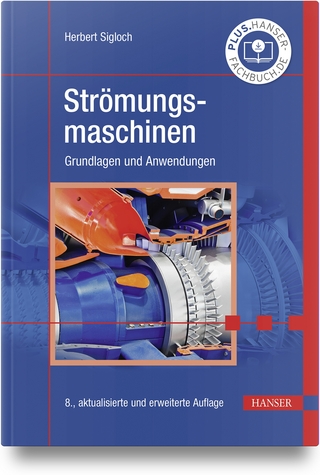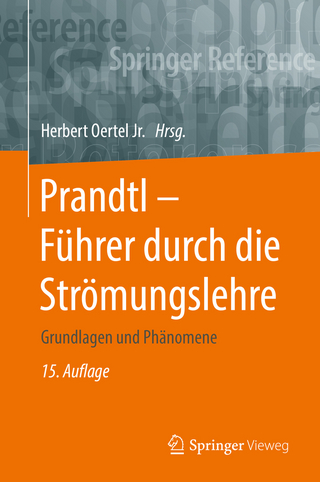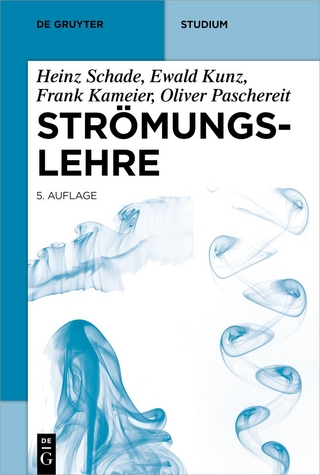
High Reynolds Number Flows Using Liquid and Gaseous Helium
Springer-Verlag New York Inc.
978-0-387-97475-0 (ISBN)
- Titel ist leider vergriffen;
keine Neuauflage - Artikel merken
Liquid helium has been studied for its intrinsic interest through much of the 20th century. In the past decade, much has been learned about heat transfer in liquid helium because of the need to cool superconducting magnets and other devices. The topic of the Seventh Oregon Conference on Low Temperature Physics was an applied one, namely the use of liquid and gaseous helium to generate high Reynolds number flows. The low kinematic viscosity of liquid helium automatically makes high Reynolds numbers accessible and the question addressed in this conference was to explore various possibilities to see what practical devices might be built using liquid or gaseous helium. There are a number of possibilities: construction of a wind tunnel using critical helium gas, free surface testing, low speed flow facilities using helium I and helium ll. At the time of the conference, most consideration had been given to the last possibility because it seemed both possible and useful to build a flow facility which could reach unprecedented Reynolds numbers. Such a device could be useful in pure research for studying turbulence, and in applied research for testing models much as is done in a water tunnel. In order to examine these possibilities in detail, we invited a wide range of experts to Eugene in October 1989 to present papers on their own specialties and to listen to presentations on the liquid helium proposals.
Liquid and Gaseous Helium as Test Fluids.- Modern Wind Tunnels.- Cryogenic Wind Tunnels.- Aerodynamic Testing in Cryogenic Nitrogen Gas —A Precursor to Testing in Superfluid Helium.- High Reynolds Number Test Requirements in Low Speed Aerodynamics.- Flow Visualization.- On the Measurement of Subsonic Flow Around an Appended Body of Revolution at Cryogenic Conditions in the NTF.- Water Tunnels.- The Six Component Magnetic Suspension System for Wind Tunnel Testing.- Magnetic Suspension — Today’s Marvel, Tomorrow’s Tool.- Recent Aerodynamic Measurements with Magnetic Suspension Systems.- Remarks on High-Reynolds-Number Turbulence Experiments and Facilities.- Helium.- Micro and Macro Turbulence in Superfluid Helium.- Application of Flow Visualization Technique to Superflow Experiment.- Laser Doppler Velocimeter Applied to Superflow Measurement.- Experimental Investigations of He II Flows at High Reynolds Number.- A Study of Homogeneous Turbulence in Superfluid Helium.- Thermal Convection in Liquid Helium.- Helium Fluid Flow Facility Cryogenic System.- Power Economy in High-Speed Wind Tunnels by Choice of Working Fluid and Temperature.
| Erscheint lt. Verlag | 16.12.1991 |
|---|---|
| Zusatzinfo | Bibliography; 31 Tables, black and white |
| Verlagsort | New York, NY |
| Sprache | englisch |
| Gewicht | 620 g |
| Themenwelt | Naturwissenschaften ► Physik / Astronomie ► Strömungsmechanik |
| Technik ► Fahrzeugbau / Schiffbau | |
| Technik ► Maschinenbau | |
| ISBN-10 | 0-387-97475-X / 038797475X |
| ISBN-13 | 978-0-387-97475-0 / 9780387974750 |
| Zustand | Neuware |
| Haben Sie eine Frage zum Produkt? |
aus dem Bereich


